Hi Everybody!!
I have come a long way from the days of being a successful Chef at the old Liendo's, to quiet luncheons in the woods with the hummingbirds and bees! I look at it as a step 'Up' in life. That is the Buzz around here. In your photostudy tonight, we will look at some of the feeders to see where the bees are this morning. (Yes, the swarm is still here). Next, I put the plan in motion to feed the bees from a big tray to free up the feeders for the birds that came in with the bees (the females and juveniles). The bees did not come with the male scouts. Somehow, we must turn into one big happy family over here! And, as a special attraction, the second Sun Halo in a week! Enjoy!
From the Google Search Index:
Halo (optical phenomenon) - Wikipedia, the free encyclopedia
en.wikipedia.org/wiki/Halo_(optical_phenomenon)
First, a walk around to look at the bird feeders to get an idea where the bees are. Then a plan to get the bees off the feeders and onto a lunch tray!
Courtyard feeder
https://en.wikipedia.org/wiki/Honey_bee
Honey bee
From Wikipedia, the free encyclopedia
| Honey bees Temporal range: Oligocene–Recent | |
|---|---|
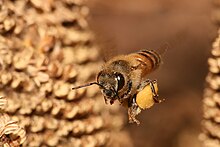 | |
| European honey bee carrying nectar back to the hive, with pollen attached | |
| Scientific classification | |
| Kingdom: | Animalia |
| Phylum: | Arthropoda |
| Class: | Insecta |
| Order: | Hymenoptera |
| Family: | Apidae |
| Subfamily: | Apinae |
| Tribe: | Apini Latreille, 1802 |
| Genus: | Apis Linnaeus, 1758 |
Colony collapse disorder (CCD)
Main article: Colony collapse disorder
Beekeepers in Western countries have been reporting slow declines of stocks for many years, apparently due to impaired protein production, changes in agricultural practice, or unpredictable weather. In early 2007, abnormally high die-offs (30–70% of hives) of European honey bee colonies occurred in North America; such a decline seems unprecedented in recent history. This has been dubbed "Colony collapse disorder" (CCD); it is unclear whether this is simply an accelerated phase of the general decline due tostochastically more adverse conditions in 2006, or a novel phenomenon. Research has so far failed to determine what causes it, but the weight of evidence is tentatively leaning towards CCD being a syndrome rather than a disease as it seems to be caused by a combination of various contributing factors rather than a single pathogen or poison.
Communication
Main article: Bee learning and communication
Honey bees are known to communicate through many different chemicals and odors, as is common in insects, but also using specific behaviours that convey information about the quality and type of resources in the environment, and where these resources are located. The details of the signalling being used vary from species to species; for example, the two smallest species, Apis andreniformis and Apis florea, dance on the upper surface of the comb, which is horizontal (not vertical, as in other species), and worker bees orient the dance in the actual compass direction of the resource to which they are recruiting.
A study has found that Apis mellifera carnica honey bees use their antenna asymmetrically for social interactions with a strong lateral preference to use their right antenna.[15] [16]
(Please see link for complete article including life cycle and honey production)
greenhouse feeder2 feeders at Kates
Birds and bees together
Feeder on portable rack
Lunch is Served! Refreshing Sugar Water Du Jour!
first one
(I rolled the rack over by the table so bees could see tray)
In the post 2 days ago, we looked at the definition of Swarming behavior from the Wikipedia page (see post). Anyway, the following quote was made:
After several hours and sometimes days, slowly a favorite location emerges from this decision making process. In order for a decision to be made in a relatively short amount of time (the swarm can only survive for about 3 days with the honey they gorged themselves with before leaving the hive), a decision will often be made when somewhere around 80% of the scouts have agreed upon a single location. When that happens, the whole cluster takes off and flies to it. A swarm may fly a kilometer or more to the scouted location.
I would like to suggest that perhaps the 3 day limit is just limited thinking. The bees can go much longer and much further by following the hummingbirds on migration. This is a learned behavior as humans have not always put up the nectar feeders. Now we do.
Also, depending on the time the Colony Collapse occurs and if no dead bodies are found, maybe they just all leave. If this year is the same as the past 5, the bees will be here until October with the Hummers. Again, I am no Scientist, only throwing out ideas for consideration in observations and photodocumentations for 5 years.
...this is brendasue signing off from Rainbow Creek. See You next time! (Serving lunch again tomorrow for the bees and birds!)
O+O








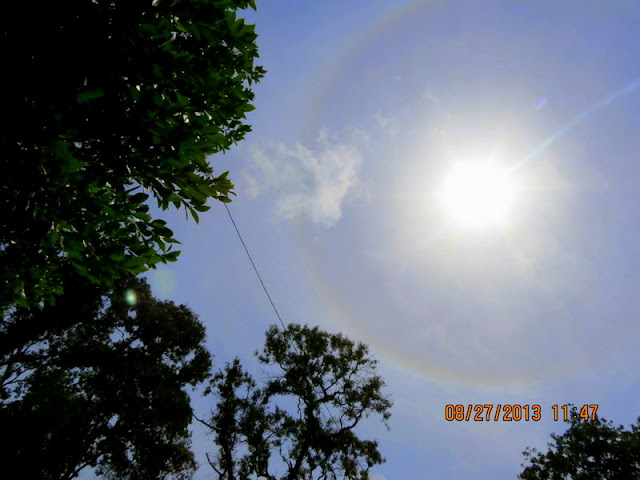










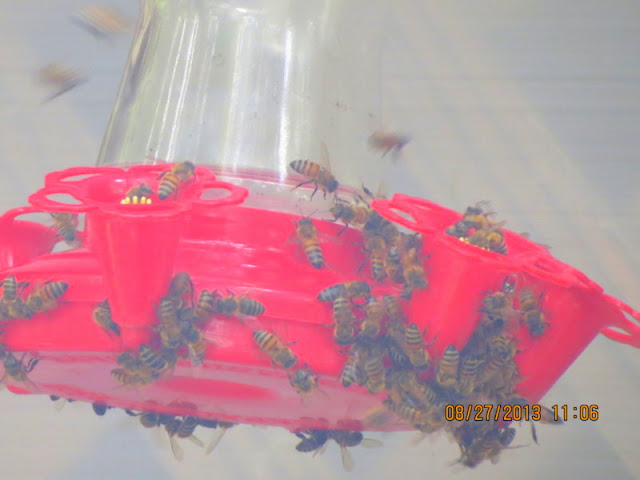








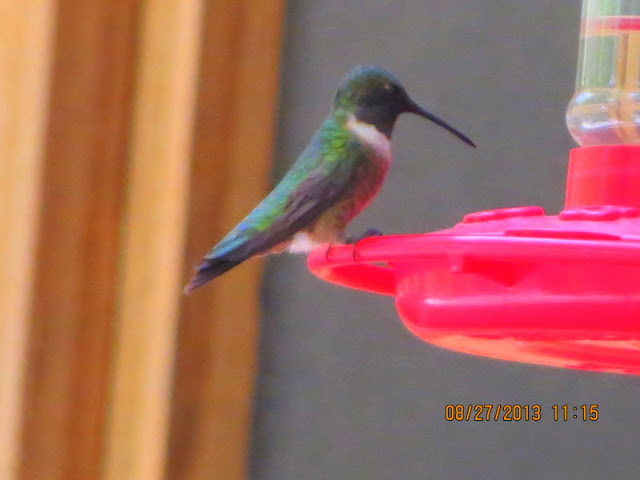







































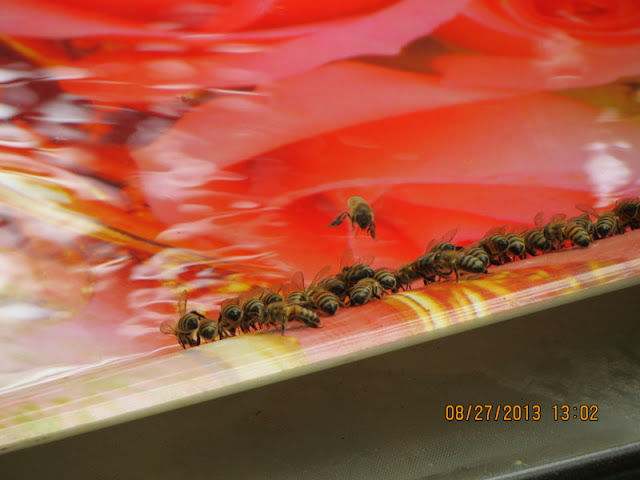












No comments:
Post a Comment
Hi Everybody! Please say hello and follow so I know you are here! Due to the inconsideration of people trying to put commercials on my blog comment area, I have restricted use of anonymous posts. Sorry that some hurt all.
My public email is katescabin@gmail.com No spammers or trolls